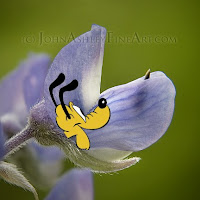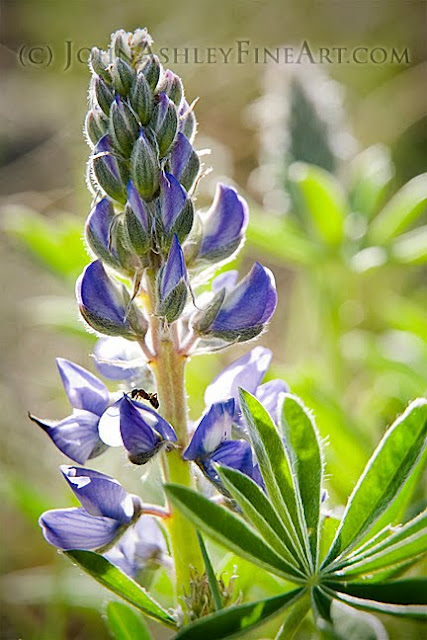Lupines are members of the pea family that will hybridize with each other in order to keep the taxonomists busy. Montana currently claims about 12 of the 80 or so species/sub-species/varieties argued over by modern-day botanists. Silky lupine (Lupinus sericeus) is probably the most common member here in our state.
Lupines grow as bushy forbs, and they are valuable as food and cover for wildlife. White-tailed deer, upland game birds, some non-game birds, and Columbian ground squirrels all dine on lupine. In Glacier National Park, bighorn sheep seek out the dried lupine stalks for winter forage. But for domestic sheep, lupine can be tasty or fatal, depending on the time of year.
Let me see, I believe it was late-June back in 1900, when those greenhorn sheepherders started driving some 6,000 imported sheep across the belly of Montana. (Yep, I'm older than I look.) You should'a seen them unload those wooly buggers, one train load after another. Five miles out from the old Livingston stockyards, these ol' boys split the sheep into two bands and settled in to camp for the night on opposite sides of a small "crik." By morning, most of the sheep in one band showed signs of poisoning. Within three days, 1,900 sheep had died -- all from the north band.
Suspicions were cast on an enemy of the sheep owner, but post-mortem exams showed that all of the dead sheep had large amounts of lupine seeds and pods in their stomachs. Lupine grew in great numbers on the north side of the creek, but not on the south side. The non-native sheep had been driven a hard five miles and were ravenous when they reached the creek -- and the ripened, native lupines.
Ripe lupine seeds contain alkaloids, which are bad news for most domestic animals. Ranchers these days know to avoid lupines in the summer, until after the seeds have fallen out of the pods.
The genus, Lupinus, comes from the Latin word for wolf, lupus. Many explanations exist for how this name became attached to this group of plants. My favorite is rooted in the legend of a she wolf that discovered Romulus and Remus -- abandoned and left floating in a pod -- and how she nursed them back to health. In a similar vein, lupine plants nurture the soil for other plants by taking nitrogen from the air and fixing it in their roots. The ability to add nitrogen to the soil, and colonize low-fertility soils, makes lupine valuable for rehabilitating disturbed areas like abandoned mine sites.
As natives, lupine species are also well-adapted to the wildfires that are a natural part of our intermountain ecology. After a fire passes through, individual plants re-sprout from a below-ground stem (the "caudex"), and buried seeds sprout profusely. The result is that lupine stands often increase in size and density after a fire. Forest floors and dry hillsides swept clean by wildfires will often turn into that familiar carpet of blue wildflowers that Lewis and Clark enjoyed.
 There's one more reason, I think, that lupines look so familiar. If you closely examine just one of the many flowers on a stalk -- maybe squint a little -- you just might see the face of a famous television and movie star.
There's one more reason, I think, that lupines look so familiar. If you closely examine just one of the many flowers on a stalk -- maybe squint a little -- you just might see the face of a famous television and movie star. It's Pluto, Micky Mouse's faithful dog! From his black nose to his white eyes, the only things missing are Pluto's ears.


